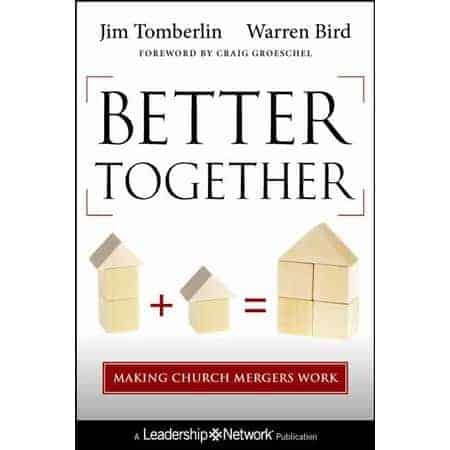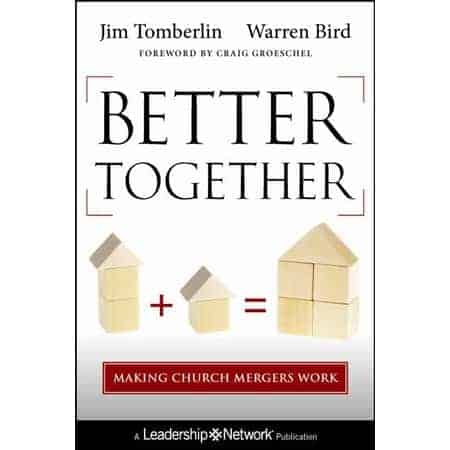 Recently, I connected with Warren Bird and Jim Tomberlin to discuss their new book, “Better Together: Making Church Mergers Work.” The book provides a complete, practical, hands-on guide for church leaders of both struggling and vibrant churches so that they can understand the issues, develop strategies, and execute a variety of forms of merger for church expansion and renewal to reinvigorate declining churches and give them a “second life.”
Recently, I connected with Warren Bird and Jim Tomberlin to discuss their new book, “Better Together: Making Church Mergers Work.” The book provides a complete, practical, hands-on guide for church leaders of both struggling and vibrant churches so that they can understand the issues, develop strategies, and execute a variety of forms of merger for church expansion and renewal to reinvigorate declining churches and give them a “second life.”
Here is my interview with Warren:
TONY: What prompted you to write “Better Together?”
WARREN: Church leaders from many different contexts (church planters, established churches, very large churches) are asking about mergers with increasing frequency. Many are experimenting with the concept and some have found a healthy and life giving way to merge with other churches. Other leaders are looking for new options beyond the old models that have proved to fail. We wanted to glean best practices and create the leading handbook for how to do mergers well. In fact, right now our book is the only book that addresses this subject matter.
TONY: In your book, you say that 1 in 3 multisite campuses come as a result of a merger. Please explain this statement in more detail.
WARREN: We have found that as churches add new campuses, 1 in 3 come from a merger. This may be the way a church becomes multisite or it may be its third, fourth or fifth campus.
TONY: What are some common ways that church plants become involved in a merger?
WARREN: Church plants often have vitality and momentum but no facility. They often connect with a congregation that has a building but lacks the momentum to move forward. Sometimes the plant merges with the congregation from whom they are renting the facility. Their established trust and partnership emerges into a merger.
TONY: Are all church mergers the same?
WARREN: No. Our book introduces several types of mergers that are based on a family model such as rebirths and adoptions. We share the pros and cons of many models. We recommend considering each model except for an (intensive care unit situation). This is where two dying churches join only to fade away together.
TONY: How can a church know whether or not they are a good merger candidate?
WARREN: That is an excellent question. We devote an entire chapter on how to pray and discern what steps to take and what questions to ask.
You can follow more of Warren’s thoughts and updates from his ministry on Twitter.







Leave a Reply